Rare birth of grey nurse shark at aquarium captured on video
A critically endangered grey nurse shark has given birth at SEA LIFE Sydney Aquarium for the first time in the aquarium’s history, marking an exciting moment in marine conservation

READING LEVEL: GREEN
A baby grey nurse shark has been born at SEA LIFE Sydney Aquarium for the first time in the aquarium’s history.
The tiny yet mighty male pup*, named Archie by the aquarists*, has marked an exciting moment in marine conservation – especially since the rare birth in captivity* was caught on camera.
During a routine check-in at the aquarium’s Shark Valley, the aquarist team watched and filmed as baby Archie entered into the world, emerging from his mother Mary-Lou.
Born on November 15, 2024, Archie has now turned four months old and measures 74cm in length. He currently lives in the aquarium’s specialised nursery pools where he is growing big and strong.
Archie is expected to grow about 30cm each year and will eventually reach an impressive 3.2m in length.
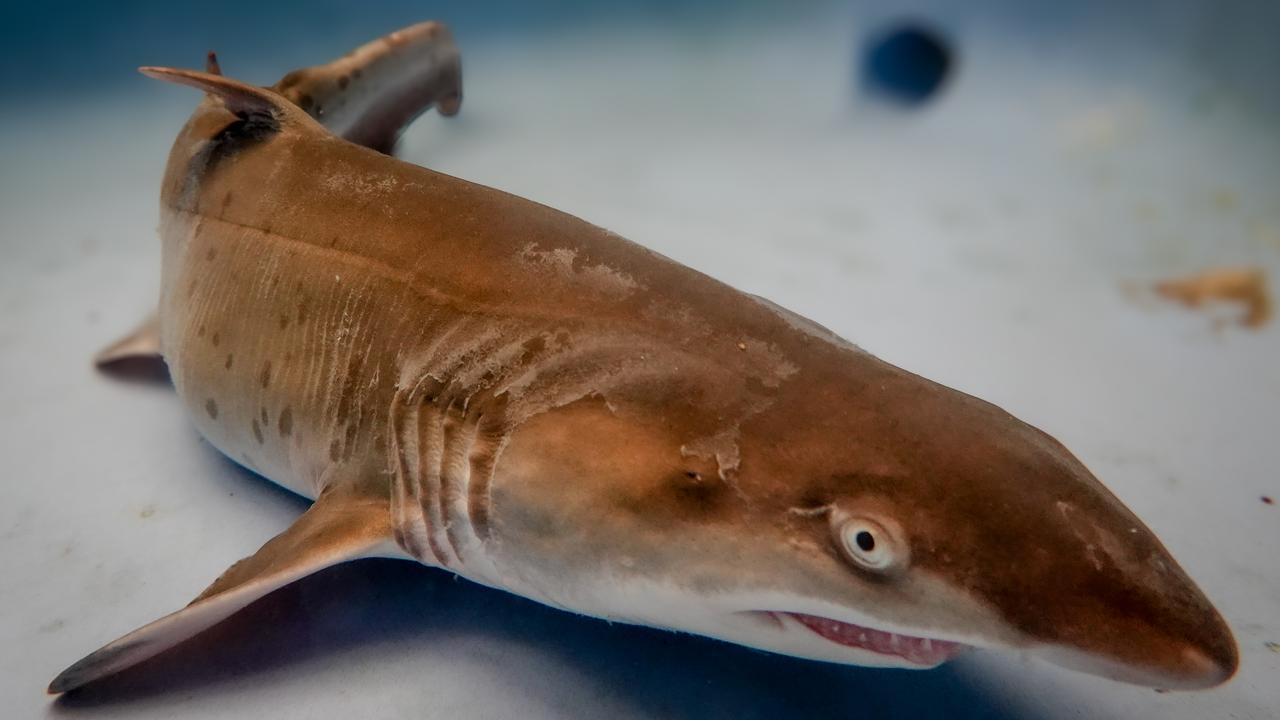
“This is a monumental milestone – not just for SEA LIFE Sydney Aquarium, but for marine conservation efforts across Australia,” said Ben Buchanan, Head of Curatorial at SEA LIFE Sydney Aquarium. “To witness the birth of an endangered grey nurse shark is incredibly rare, and being able to capture it on video makes it even more special.
“While we would love to introduce Archie to our guests, his health and development remain our top priority. He will continue to be cared for in our behind-the-scenes nursery until he reaches approximately 1.5m in length, at which point he will be better suited to join the five adult grey nurse sharks in Shark Valley.”
While you won’t be able to visit Archie in Shark Valley until he is much larger, you can follow his journey through the SEA LIFE Sydney Aquarium website for now.
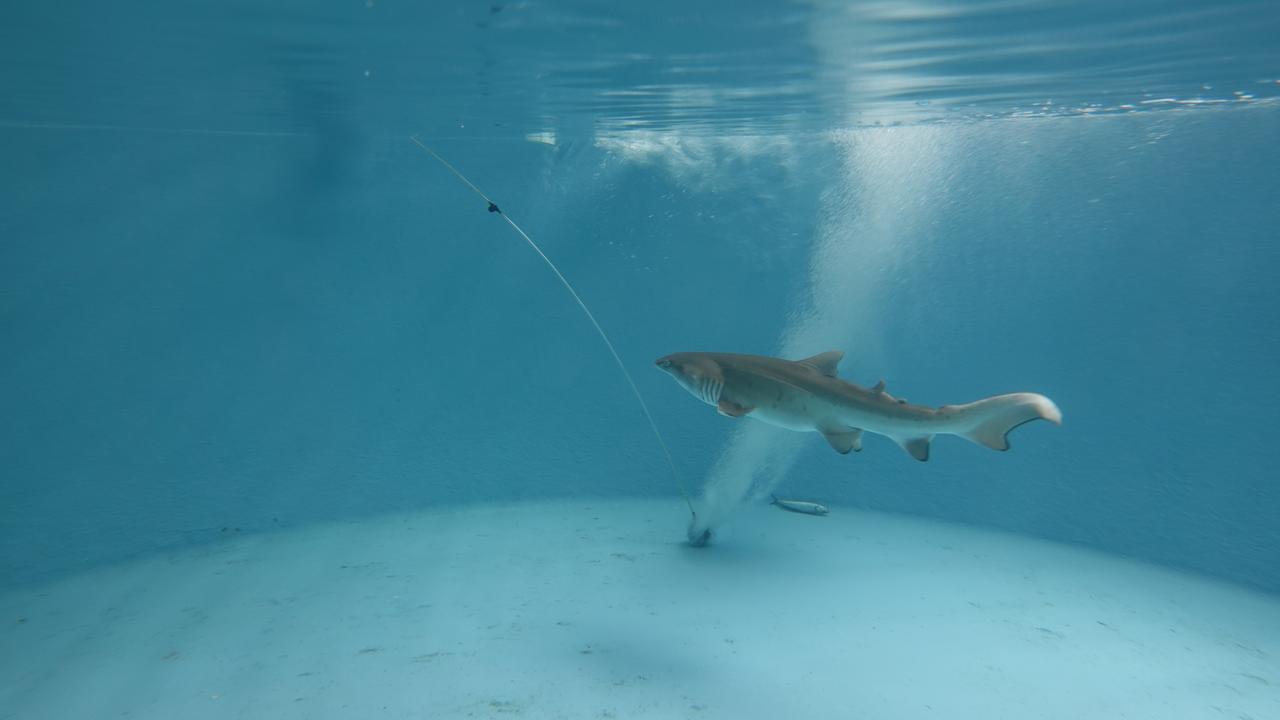
The birth happened naturally after the spring mating season, where Mary-Lou was observed mating a few times. For now, it remains uncertain which of the three male sharks, Murdoch, Trio and Napoleon is Archie’s father. When Archie is older and stronger, his DNA* will be tested and confirmed.
Grey nurse sharks are currently listed as critically endangered* across New South Wales, facing significant threats from overfishing and habitat destruction. Beyond their awe-inspiring presence, these magnificent creatures play a crucial role in marine ecosystems*.
They are also fascinating creatures. Here are some grey nurse shark facts to sink your teeth into.

GREY NURSE SHARKS BREED EVERY TWO YEARS
The breeding of grey nurse sharks is quite unusual. Female grey nurse sharks only reproduce every second year. This is the lowest reproductive rate of any shark. Female grey nurse sharks have two uteri*, as a result, a maximum of two pups are produced per litter – one in each uterus.
Mating occurs mainly in spring and is followed by a 9-12 month gestation* period, and the young are born in summer.
BABIES FEND FOR THEMSELVES
Grey nurse sharks are viviparous, meaning the pups are born live and fend for themselves straight after birth. Pups are around 80cm in size and grow to a maximum length of 3.2m. Female sharks can take up to 10 years to reach sexual maturity*, while male sharks are slightly faster, reaching sexual maturity around 7 years.
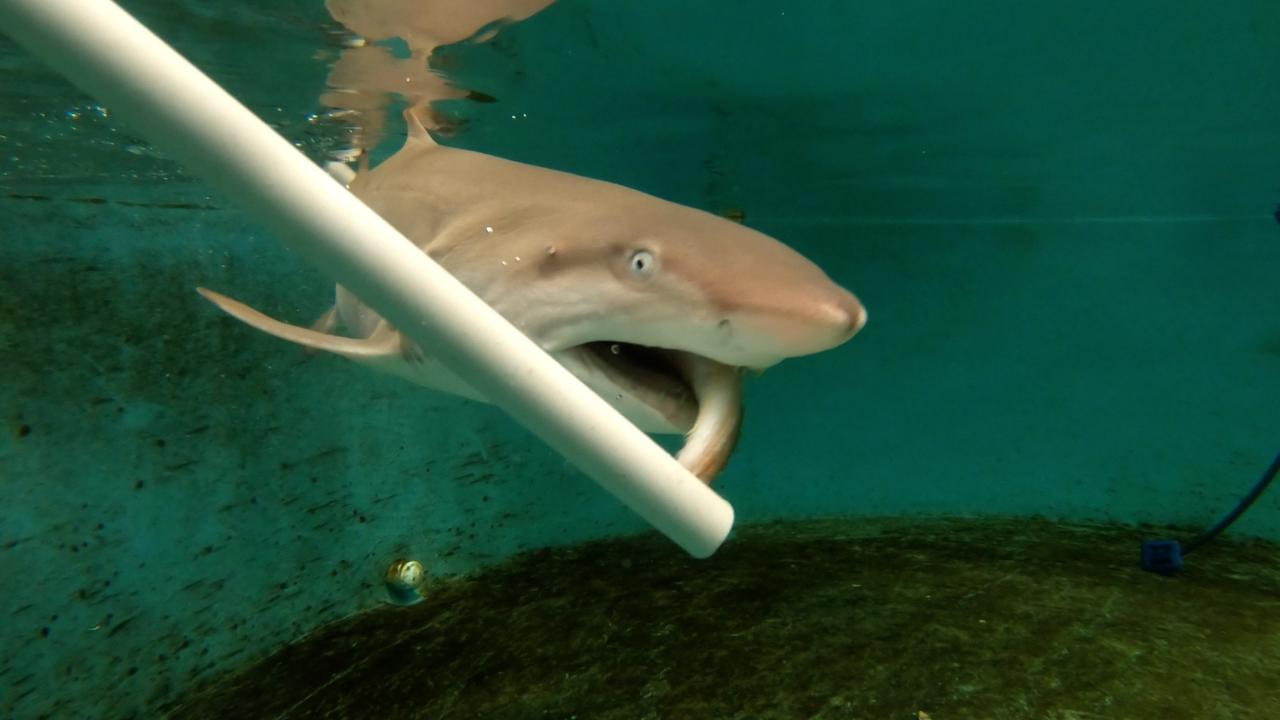
AQUARIUM BIRTHS ARE RARE
The birth of grey nurse shark pups in an aquarium is extremely rare as the species is slow to reproduce due to a number of factors. Some of these factors include the fact that they only breed every two years, they have a long gestation period and they sometimes engage in intra-uterine cannibalism, where one shark embryo* eats the other one inside the mother’s tummy.
In 1997, SEA LIFE Sunshine Coast was the first aquarium in the world to successfully breed grey nurse sharks.
This significant event highlights the vital role that Australia’s zoos and aquariums play in wildlife conservation, they are essential centres for protecting endangered species like the grey nurse shark, which remains critically endangered throughout NSW waters.
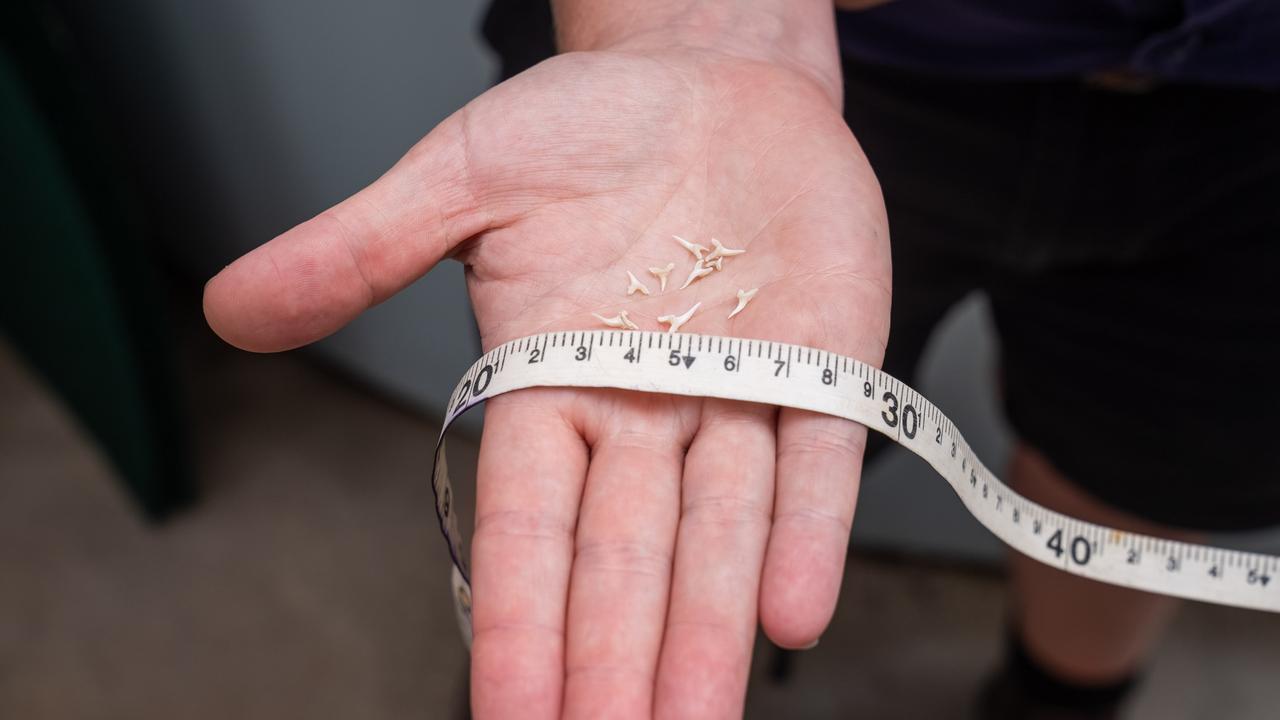
WORLD-FIRST PROTECTION
During the 1960s and 1970s, the population of the grey nurse shark declined sharply and in 1984, the grey nurse shark (Carcharias taurus) east coast population became the first shark species in the world to be awarded protected* status. SEA LIFE Sydney Aquarium supports conservation measures to protect the species, such as through the establishment of marine parks where fishing is prohibited*.
WATCH THE VIDEO
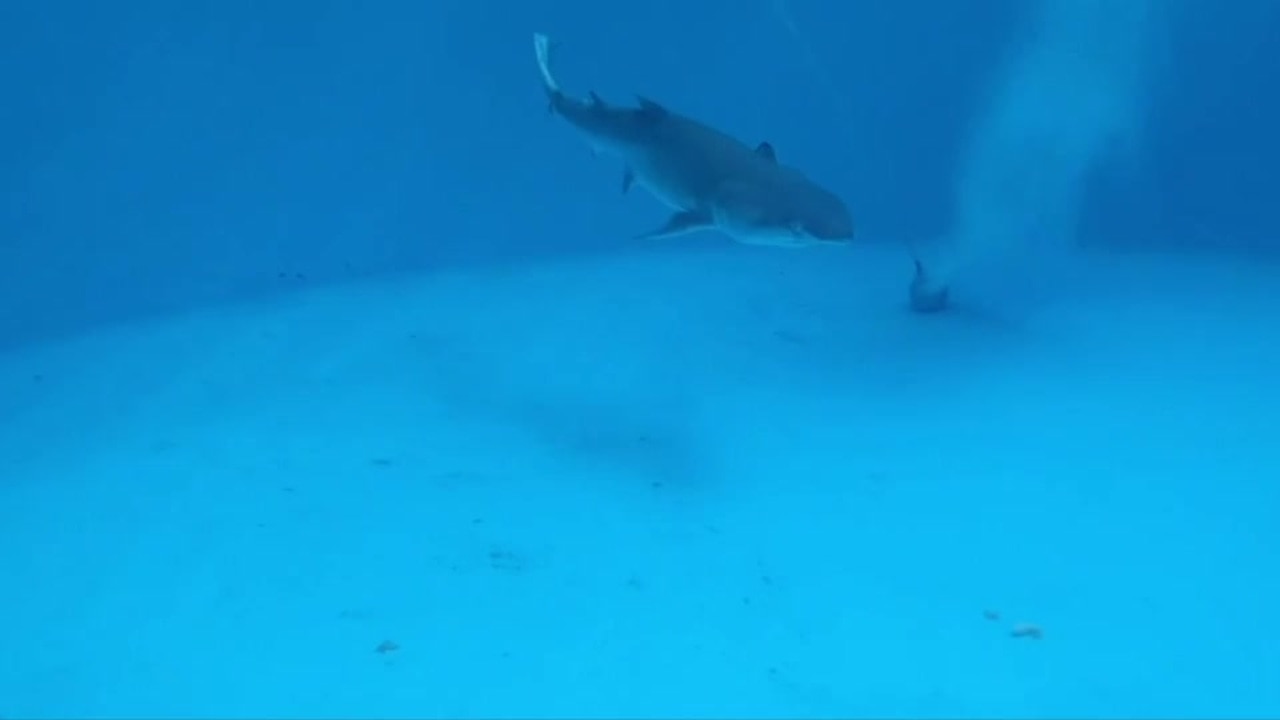
POLL
GLOSSARY
- aquarists: people who work in and maintain aquariums
- pup: a baby shark
- captivity: kept in an enclosure, not in the wild
- DNA: Deoxyribonucleic acid, the molecule carrying genetic information for the development and functioning of a creature, like a genetic blueprint of an animal
- critically endangered: when a species faces extreme risk of extinction
- marine ecosystems: the way all the creatures in an ocean environment interact
- uteri: a pair of uterus, the hollow female reproductive organ where a baby animal forms and grows during pregnancy
- gestation: pregnancy
- sexual maturity: old enough to reproduce
- embryo: unborn offspring in the process of development
- protected: not allowed to be hunted or fished
- prohibited: against the law
EXTRA READING
Baby primate’s gender reveal party
Aussies hatch sea creature survival plans
Stingray pregnant without mating
QUICK QUIZ
1. Which species of shark gave birth to a baby at SEA LIFE Sydney Aquarium?
2. How old is Archie now?
3. How long is he expected to grow each year?
4. Why is it rare for grey nurse sharks to reproduce in captivity?
5. What year was the grey nurse shark awarded protected status?
LISTEN TO THIS STORY
CLASSROOM ACTIVITIES
1. Shark maths
The information in the news story gives us enough detail to estimate how long it will be before Archie is able to be released into Shark Valley as well as how long it will take for him to reach his full size.
Can you show two different strategies for making these calculations?
Time: allow 20 minutes to complete this activity
Curriculum Links: English; Mathematics
2. Extension
Create a quiz about grey nurse sharks to test a classmate. Write a list of five questions. If your time is limited, choose questions that can be answered from information in the news story. If you have more time, you could ask questions that your partner will need to research to find answers. Swap quizzes to build your knowledge and understanding of these animals.
Time: allow 30 minutes to complete this activity
Curriculum Links: English; Science
VCOP ACTIVITY
Read with Kung Fu punctuation
Pair up with the article between you and stand up to make it easy to demonstrate your Kung Fu punctuation.
Practise reading one sentence at a time. Now read it again, while acting out the punctuation as you read.
Read and act three sentences before swapping with your partner.
Take two turns each.
Now ask your partner to read a sentence out loud while you try and act out the punctuation. Can you keep up? Swap over?
Try acting out two sentences – are you laughing yet?

